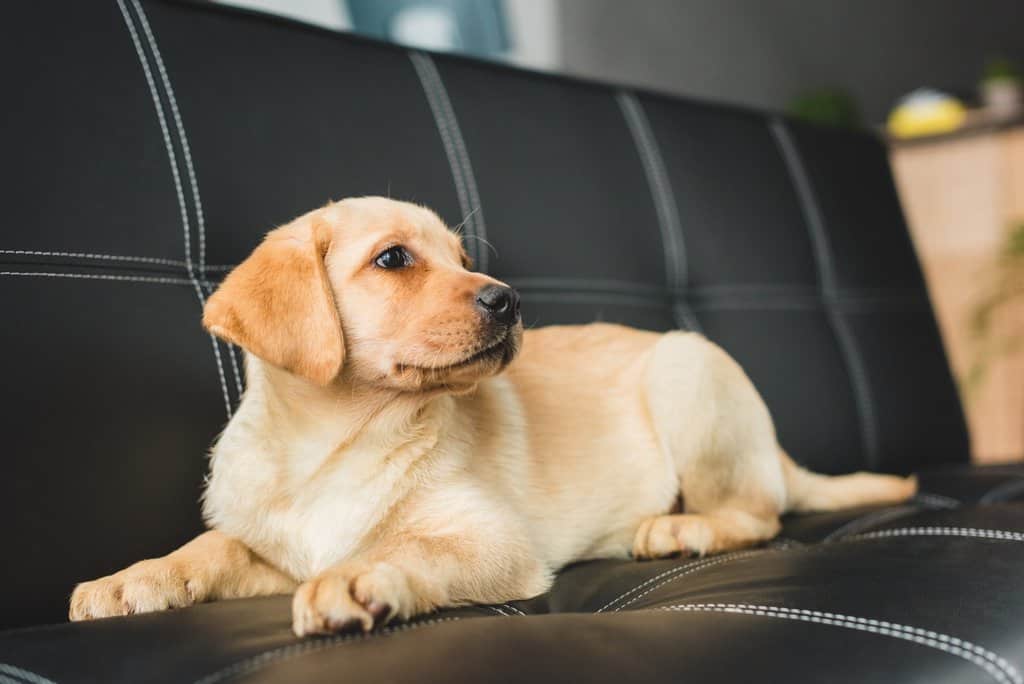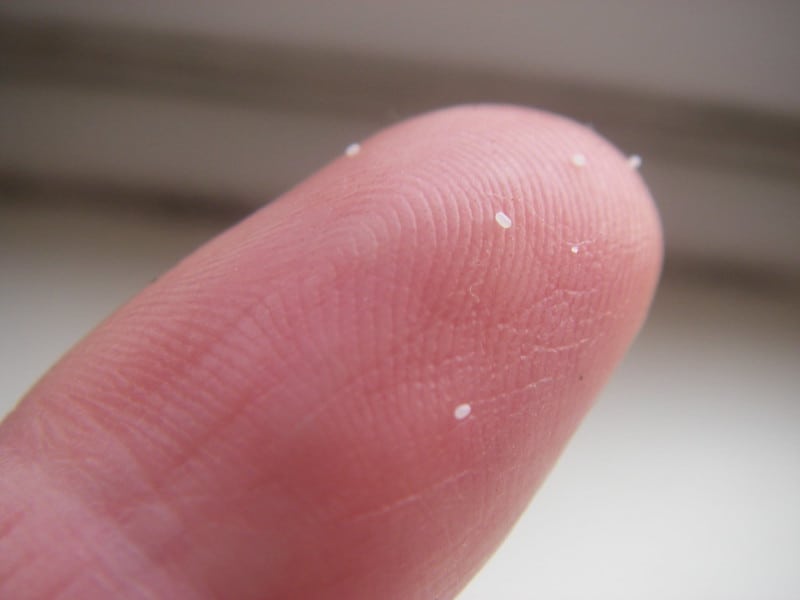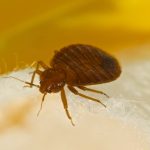Couches and sofas are the most common area where you can find fleas because it’s where we all go to relax, meet guests, and chill with our pets like dogs or cats. This exposes your beloved leather furniture to flea infestations that cause skin irritations and other health problems to everyone in your home. In this article, we’ll discuss some of the safe methods to get rid of fleas without damaging your leather furniture.
Can fleas live in leather?
The answer is both yes and no. Fleas need a host in order to survive and a leather surface is not something that they can get nourishment from. If you have pets that carry fleas, you might be able to find fleas on your leather items and they can attach to your skin. Their bites can cause itchiness and skin rashes.
How can I tell if my couch has fleas?
Your furniture is one of the most common spots where you can find fleas and flea eggs because it’s simply where people and their pets hang out. You might not be able to directly tell if your leather couch has been infested with fleas because these pests will most likely be hiding in the cushions and not on the surface.

It’s rare that you can spot fleas on the surface of your couch unless it’s been badly infested or a flea-ridden pet has recently laid on it. That’s why it is important that you check in between the cracks and under the couch. If you happen to find fleas there, there’s a high possibility that there are also fleas inside the cushion of your couch.
Here are some ways you can tell if your couch has fleas:
- If there are brown or black specks on your couch even if you’ve already dusted it, chances are those are flea droppings.
- If you see dark-colored tiny insects crawling on the surface, those might be adult fleas and if there are adult fleas, you’ll probably see white eggs around hidden spots.
- If your pet has fleas and they like climbing on your couch, they may have rubbed some of their fleas onto the furniture. You’ll notice that your dog might be licking the couch more than usual and they’ll also start scratching it hard.
What do flea eggs look like?
Flea eggs are very small– almost microscopic in size. It’s very hard to tell or even see one with the naked eye, but they are usually like tiny rice grains with shiny or translucent colors. Over time, they will start looking bright and solid white signaling that they will be hatching soon.

If you haven’t seen a flea egg before, you might mistake them as simply dandruff or a small speck of dust on the surface. If your couch is light-colored, it will be especially hard to spot flea eggs. You should also know that flea eggs need a blood source to survive, so even if you can’t see them, you’ll definitely feel the itchiness on your skin every time you sit on your couch.
How to get rid of fleas on leather furniture
If you suspect that you have a flea infestation on your leather furniture, you should get to work on getting rid of them as soon as possible. Fleas can multiply from hundreds to thousands in just less than a month and once they have multiplied to a huge number, it will be too much of a risk to save your leather furniture. Here are some ways you can get rid of fleas on leather furniture:
Vacuuming
Vacuuming is always an effective way of removing unwanted particles on your leather furniture. If you happen to find fleas on the surface, try vacuuming as your first solution. To do this, you need to remove the couch cushions and make sure to vacuum the spot under them. Only use a top-quality vacuum cleaner and use a smaller attachment so you can reach in between tiny cracks in the couch.
Flea collar
You can place a flea collar inside your vacuum cleaner to make sure that those that are sucked into the vacuum are killed. Just be careful as the fumes can cause breathing problems. It’s best to wear a mask when you’re using a flea collar. Dispose of the flea collar in a trash bin outside of your home once you’re done.
Diatomaceous earth
This powdered substance can be used to get rid of any bug infestations on your leather furniture. Just sprinkle a small amount including the cracks and crevices and leave it on there for a few days before vacuuming the residue. Just be careful not to inhale any of the substance or come into contact with it as it can also cause health complications similar to a flea collar.
Vacuuming might remove the surface grime and fleas, but it may not be enough to penetrate into the cushion and kill the flea eggs. If there are still fleas on your couch after you’ve thoroughly vacuumed it, try these methods below instead:
Plant-based flea spray
For this method, we will specify only using a plant-based flea spray as most flea sprays on the market contain a strong solvent that can dissolve the finishing of your leather couch and cause discoloration. We recommend using the Vet’s Best Flea and Tick Home Spray since it’s made with natural oils and is gentle enough for leather furniture.
Things you will need:
- Herbal flea spray
- Microfiber cloth for leather
- Leather conditioner
Steps:
- Read the product’s label and instructions first. It should say that is made with organic materials like plant extracts. Otherwise, it might be too strong and will ruin your leather furniture.
- Shake the bottle before opening it. Pour a small amount of the product onto a soft cloth and wipe it in a hidden spot to see if there is any discoloration. If there is none, you can proceed.
- Wipe it on the surface of your leather furniture and let it dry completely for maximum effectiveness.
- Wait for a few hours and wipe it down with a soft cloth dampened with water to remove the residues.
- Repeat the process as needed until you’re sure that all the fleas and the flea eggs are dead. Apply leather conditioner.
Vinegar solution
A vinegar solution is a great way to get rid of fleas on your leather furniture if you don’t want to use strong chemicals in your home. The acid from the vinegar should be enough to kill fleas and their eggs, plus this solution is safe for pets and children in your home. You can use white vinegar or apple cider vinegar for this method.
Things you will need:
- White vinegar or apple cider vinegar
- Plastic container or spray bottle
- Soft cloth
- Microfiber towel
- Leather conditioner
Steps:
- Wipe the surface of your leather furniture using a soft towel to remove any loose dirt.
- In a plastic container, mix equal parts of the vinegar of your choice with equal parts of water. Diluting it will lessen the risk of your leather material drying out during this process.
- Transfer the vinegar solution to a spray bottle for easier application. You can also apply it using a soft cloth by dampening it.
- Gently apply it to every inch of your leather furniture, especially in between the cracks as that’s where the fleas will be hiding.
- Leave it on there for around 5 minutes to make sure that it kills all the pests.
- Wipe the surface using a damp cloth and water to remove the vinegar residue.
- Dry the leather with a microfiber towel and apply a leather conditioner once it’s fully dry to restore its moisture.
Soap and water
Another safe way to get rid of fleas on your leather couch is by using a soap and water solution. All you need to do is mix equal parts of mild soap and water to form a lather. Apply it onto your leather furniture and wipe it down using a soft cloth. This should kill the fleas and flea eggs that are living on the surface, but it may not be enough to kill the pests that are already deep into the cushions.
Note: You might be tempted to use strong chemicals such as bleach or borax when it comes to flea infestation, but we don’t recommend doing so as it will damage your leather couch. Plus, it can cause some adverse health effects if inhaled by humans and pets alike. If there is a way to remove the cushions inside, you should remove them and clean them separately from the leather material.
Treat the root problem
If you don’t address the root cause of the flea infestation in your home, they will always come back no matter how hard you clean your furniture. Check your pets because they are most likely the carriers and treat them with anti-flea drops Frontline Plus (it kills adult fleas plus flea eggs and larvae) and get them cleaned at the vet. Also make sure that there are no other furniture or areas in your home that have fleas so they won’t spread further.
Call the professionals
If the flea infestations insist even after you’ve exhausted all the methods above, then it might be time to call professional exterminators. They will handle the problem using chemicals and methods that only they can perform properly. Let them know that you’re dealing with a flea infestation on your leather furniture, and they’ll know what to do.
Conclusion
Fleas are resilient pesky bugs that can thrive with just warmth and food that they will get from you and your pets. Once they get into contact with you, they can cause skin irritations, itchiness, rashes, and even respiratory problems. That’s why mitigating the infestation as soon as you can is crucial. Aside from making sure that you effectively get rid of them, you should also ensure that they won’t return.
FAQ
Can cat and dog fleas live on a leather sofa?
Yes. Most flea infestations in your home and on your furniture come from cats and dogs. Even if they initially didn’t have fleas when you got them, they may have been infected by interacting with other animals. You should take your pets for regular grooming to ensure that they don’t bring any bugs and diseases to your home.
Does vacuuming a couch get rid of fleas?
Yes, vacuuming can indeed get rid of fleas on your couch. It’s a great way to even prevent further infestations and dirt build-up on your furniture and carpets. For better cleaning maintenance of your couch, make sure to vacuum it at least once a week.
Can I use a flea spray on the leather sofa?
Yes, but only herbal flea sprays with organic plant extracts. As we mentioned above, many of the leading flea spray brands on the market contain harsh chemicals that will ruin your leather sofa. If these flea sprays get absorbed into your leather sofa, they will attack the leather material from the inside making the fibers weak and eventually breaking.





